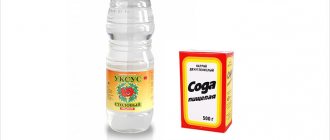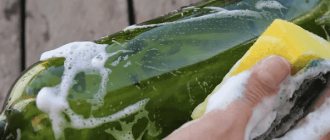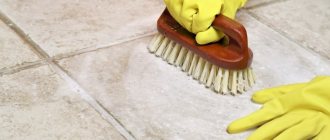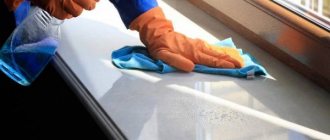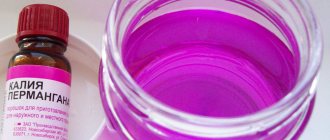The appearance of a green coating on the walls of the aquarium indicates an imbalance in the ecosystem of the home pond. Contamination of the walls is not only an aesthetic problem. Excessive development of algae can pose a serious threat to all inhabitants, so getting rid of greenery in the aquarium is the first priority of its owner. Algae are an integral part of the natural microflora of the tank, but their excessive development of green plaque begins when the conditions of detention are violated.
How to remove green deposits on the walls of an aquarium
A dense layer of green deposits in the aquarium impairs visibility.
The cause of contamination is microscopic algae - Protococcus. As a result of their growth and development, a greenish layer of cells is formed on the inside of the walls. If it is small, this is normal and will not harm the fish in any way. But if the plaque becomes so abundant that it is impossible to see through it what is in the aquarium, it’s time to take action.
Getting rid of green algae is simple: you need to wait until Protococcus completes the process of asexual reproduction by zoospores. The cycle lasts 3 weeks. During this period, all zoospores should settle on the walls and become full-fledged cells. As a result, the unpleasant green coating will gradually lighten and die off.
After 21 days, you can clean the glass using a scraper. It is easy to get rid of the remains of dead cells with a hose equipped with a water change system.
To ensure that the situation does not repeat itself, it is necessary to analyze the reasons why Protococcus appeared and make efforts to eliminate them. Most often, green deposits appear in containers that are placed in direct sunlight. High water pH also promotes algae growth. Eliminate these causes, and plaque formation will remain within normal limits.
If you clean the glass before the end of its life cycle, it will take months to scrub off the green mass on the walls of the aquarium.
What is needed for cleaning?
Having eliminated all the causes of plaque, it is necessary to properly clean the ecosystem of algae. How to clean and what to wash the aquarium with? Cleaning an aquarium at home requires the availability of special equipment, which can be purchased at any place where aquarium fish are sold.
Cleaning the aquarium from green deposits using a soft brush
To clean the aquarium you will need:
- a scraper to remove algae from glass;
- water container, volume from 10 l;
- prepared replacement water in sufficient quantity;
- filter accessories;
- siphon type pump;
- aquarium glass cleaner;
- baking soda or wine vinegar to clean the aquarium;
- 10% bleach solution;
- blade.
How to remove brown plaque on walls
Brown coating on walls and plants appears due to diatoms.
Brown coating may appear due to the development of diatoms. If it is discovered during the start-up of the aquarium and has not yet spread to the entire area, you can get rid of it by maintaining proper maintenance. In this case, they will disappear within two weeks. It is recommended to regularly clean the glass and change up to 30% of the water. With this approach, intensive development of plants will displace diatoms.
If the appearance of diatoms is detected in an existing aquarium, you should change the liquid more often, adding about a quarter of fresh water 2-3 times a week. It is also necessary to clean glass and interior decorative elements using brushes, scrapers, and sponges.
In addition, you should pay attention to the filter. For example, the filtration rate may decrease due to air pollution or contamination of the water intake system. It is also worth reducing the daylight hours to 360 minutes per day, then increasing its duration to 10 hours over 14 days. Lamps need to be changed once a year.
Residents such as Otocinclus, Theodoxus snail, Siamese algae eater, Hypostomus plecostomus, Gyrinocheilus and mollusks will also help get rid of brown algae.
Controlling diatoms with chemicals is in most cases ineffective and can worsen the situation. Using a preventative dose of algaecides will stimulate the growth of aquarium plants, which will help get rid of the problem.
How to get rid of black deposits in an aquarium
Dark plaque is called “blackbeard” because of its characteristic appearance.
The formation of dark plaque on stones and walls indicates a “blackbeard” infection. This organism inhabits plants and decorations.
You can get rid of it by using chemicals and reducing the light level. But this will only give a partial effect and will not solve the problem. To completely destroy the “blackbeard”, an integrated approach is needed:
- Replace a quarter of the aquarium water regularly. The liquid should not contain foreign impurities; this can be verified by using special indicators.
- Clean the soil from remaining organic matter, such as dead leaves. Reduce the amount of feed if it settles on the bottom.
- Increase the lighting power to 1 W per 1000 ml of liquid. The light should be on for no more than 12 hours a day.
If successful, the black coating on the rocks in the aquarium will begin to disappear: first the color of the algae will become lighter, and then they will fall off.
How to siphon sandy soil?
How to siphon sandy soil correctly:
- Before cleaning, prepare settled water.
- Press the siphon cylinder to the ground. Some devices have a bulb that can be used to create traction. ...
- Carefully go all the way to the bottom of the aquarium. ...
- After cleaning is complete, add new water to the aquarium.
Interesting materials:
What lands did Vasily III annex to Moscow? What genres appeared first in Rus'? What zodiac signs are there in August? Which zodiac signs belong to? What famous ballets do you know? What are the ranks of the prosecutor's office? What animals are found in the Rostov region? Which sounds form pairs based on hardness and softness, which are Unpaired? What should potatoes be like? What groups do algae belong to?
How to clean rocks in an aquarium
A solution of hot water and bleach cleans stones well from plaque.
Often, algae grows not only on the walls, but also on decorative elements, which spoils the appearance. It is easy to wash stones from greenery; for this you will need the following tools:
- brush (you can use a toothbrush) or sponge;
- small capacity;
- bleach.
You can remove plaque from the surface of stones by following several steps:
- Place all stones in a container.
- Pour boiling water or hot liquid over them and leave for a quarter of an hour.
- Remove them one by one and clean each stone with a sponge or toothbrush.
- Place the decorations in a container and pour a solution of bleach and hot liquid in a 2:1 ratio for 20-25 minutes.
- Rinse with running water.
If all the conditions for cleaning the decorative elements have been met, during the second soaking the algae will first turn white and then fall off.
Mechanical cleaning
This type of care is performed using a special plastic scraper, which can be purchased at any pet store. An alternative tool is the hard side of a kitchen sponge. Hard-to-reach areas are cleaned with a hard-bristled toothbrush. Despite the absence of chemicals, at the final stage the container should be rinsed to remove cleaning residues. A steam cleaner can be a replacement for a mechanical tool; steam softens the plaque and makes it easier to remove, but it will be useless against stone.
Important! It is undesirable to use metal tools; small particles of metal begin to rust, form a reddish coating and scratches on the walls, and harm the fish by getting into the esophagus.
Methods and tools used for cleaning
Special equipment will help to clean the inner surface of the walls:
- glass scraper to remove dark deposits and algae;
- siphon to clean the soil;
- container (bucket, basin);
- net
Magnetic scraper for removing plaque
Siphon for soil purification
Net for catching fish
The scraper is selected depending on the size and type of the aquarium. It is better to give preference to magnetic. It is more expensive, but it collects dirt from the surface of the glass better. For these purposes, you can also use a regular sponge, not soaked in detergents.
A special soil cleaner will help rinse the aquarium sand without removing it outside.
If it is necessary to change the water, it is better to retrieve the fish using a net. It should also be chosen taking into account the size of the inhabitants, so as not to damage the fins when catching.
In addition to available tools, cleaning products are needed. Do not wash the aquarium with preparations that contain chemicals. If their particles remain inside, there is a possibility of harming the inhabitants. Baking soda is acceptable, but it can also be dangerous for fish. After cleaning the walls by any means, you need to rinse everything thoroughly with clean water.
If you cannot do without a special cleaning solution, it is advisable to use soap, Comet or Domestos.
Traditional methods
Since it is not recommended to use chemicals to remove plaque from glass, there are traditional methods for combating unwanted algae:
- 20 g of citric acid in powder form are dissolved in one glass of water, mixed and poured into a spray bottle. Then the walls are treated with this mixture, left for a quarter of an hour, and washed well.
- Dilute one part of ammonia in 10 parts of liquid and remove the mucus layer with the solution.
- 1 tbsp. l. acetic acid is mixed with one glass of water and applied to the surface that has begun to turn green.
Despite the fact that traditional methods are considered more gentle and safe, all inhabitants must be transplanted before using them.
Tips for care and use.
How to prevent contamination so as not to wash the aquarium frequently
Maintenance must be carried out regularly. Cleaning too often and too hard will harm the fish, and too infrequently too. Cleaning products should only be used as a last resort. There should not be too many animals in the tank. There is no need to overfeed them. Equipment must be maintained in good condition. Part of the water is changed regularly. The soil should be siphoned, not washed. The main condition is attentive, but not excessive care.
How to clean the soil in an aquarium with a siphon
The end of the siphon hose must be directed into an empty bucket. Use the neck to scoop up the top layer of soil. The waste, along with some of the water, will fall into the bucket. You can't do this too carefully. It is enough to walk along the bottom once and remove what can be easily removed.
Attention! Some caution is required during the procedure. It can pull fish inside. This will not harm the small fish. It will go into a bucket where it will be easy to get out. But a large one, resisting the movement of water, can damage the fins. You should not point the siphon directly at the inhabitants of the aquarium.
If there are live plants in the tank, only the exposed areas need to be cleaned. If there are decorations and shelters, it is imperative to clean underneath them. This is where the most waste accumulates.
How to recognize aquarium pests and get rid of them
Any shellfish pose a threat to the aquarium, as they quickly pollute it. This is especially true for snails. They feed on fish food and actively reproduce. They can be removed by hand or using snail traps. These are sold in specialized stores.
Three types of algae pose a danger to an aquarium: brown, green and blue-green. To get rid of the first two, you need to adjust the tank lighting. Brown algae appears in dark water and looks like a brown coating. Greens multiply when there is too much light and make the water green and cloudy. If there are too many of them, residents can suffocate.
Attention! Algae reproduce only with sufficient food. Do not overfeed fish or keep many in one container. Timely cleaning is required.
Blue-green algae cover objects with a film. They are toxic to fish and steal light from plants. It's hard to get rid of them. The films are removed by hand or with a sponge, and the water is often replaced. Only restarting the aquarium is guaranteed to help.
If other algae appear in the aquarium, you can remove them physically.
Biological methods for cleaning an aquarium
Tetradons, loaches and Helena snails feed on other snails and clean the aquarium of them. Loricaria catfish eat rotting wood. Algae eaters and Amano shrimp will help get rid of algae.
We must remember that they are all living beings, just like other pets. They need to be looked after and their behavior monitored.
Cleaning an aquarium is a process that often intimidates beginners. There are many operations to be carried out and many parameters to be taken care of. Cleaning is slow at first, but over time it will take 30-40 minutes per week. A happy, healthy fish will please you much longer.
How often do you clean the aquarium, what equipment do you use? Write to us in the comments!
Prevention of plaque formation on the walls and stones of the aquarium
The level of lighting in the aquarium needs to be controlled by lighting.
As preventive measures that will prevent the reappearance of pests, you can apply:
- regular change of water, pre-settled for 5 days;
- control of daylight hours using backlighting, which should operate no more than 10 hours a day;
- filling the aquarium with plants and taking good care of them;
- launching fish that feed on algae;
- control of the amount of food: within 15 minutes the fish should eat all the food received; if it remains and settles on the stones, then the amount should be reduced;
It is worth fighting brown, green and brown plaque on the walls of the aquarium not only to give it an attractive appearance, but also to save the lives of the inhabitants. Algae can upset the balance of nutrients in an artificial ecosystem, and then the fish will feel uncomfortable there.
Causes of plaque
First, it’s worth getting acquainted with the causes of limescale. As a rule, this is excessively hard water, which contains a lot of magnesium and calcium salts. Factors contributing to the accumulation of water stone are:
- lack of aquarium flora or its absence;
- adding feed too frequently;
- use of water without preliminary settling;
- irregular care;
- lack of a filter or its low quality.
If you take into account all the listed nuances in time, you can avoid the appearance of a large number of deposits.
Important! It is impossible to use water completely devoid of minerals; it disrupts the ecological balance of the aquarium and leads to the death of fish and vegetation.

